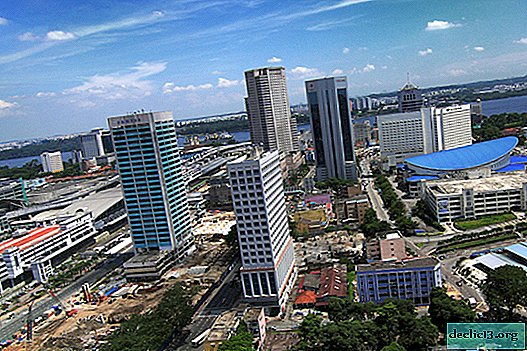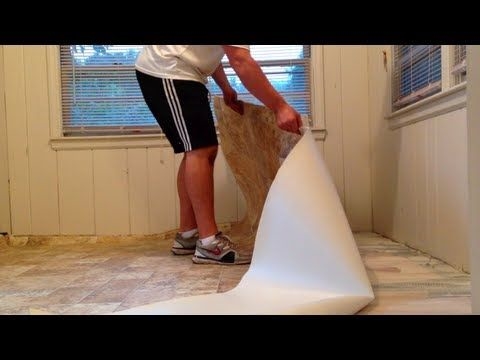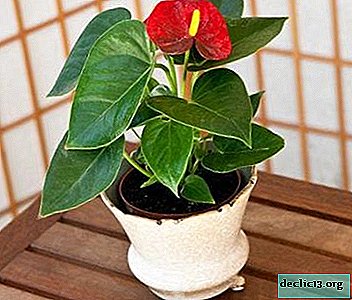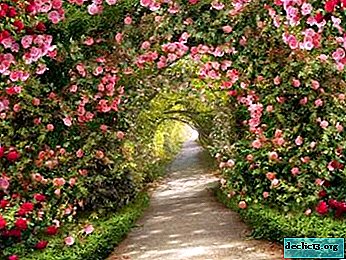When and how to feed the radish when planting and after germination? Step-by-step instructions for feeding
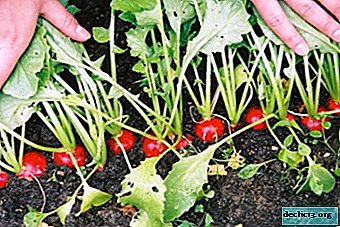
Radish is a vegetable that is eaten in early spring. Saturated with vitamins, it will help strengthen the human body in spring.
It is easy to look after him. It does not require special attention. This culture can be planted earlier than other vegetables in the open ground, grown in greenhouses, greenhouses, on the balcony.
By its usefulness and taste, the radish is not inferior to other cultures. But you still need to feed the radish, it will not be superfluous.
The importance of timely top dressing of radishes for rapid growth
Radishes need to start feeding on time. With top dressing, the radish will grow and develop faster. And the root crop will turn out to be larger and tastier. But you should also observe the rate of fertilizer applied to the soil. Otherwise, the opposite will turn out. Big and juicy leaves will grow. Yes, and nitrates in the radish itself will accumulate a lot.
If the soil is poor, then it is fertilized during vegetation twice. With a fertile composition, one is enough. That is, radish should be fed during planting and when it is already growing.
You need to know that you do not need to feed if the soil is fertilized.The procedure, carried out at the wrong time, requires fertilizing the soil.
Is there a difference in fertilizers when planting in open ground, a greenhouse or at home?
 In any place, wherever radishes are planted, the same fertilizers will be needed in certain quantities.
In any place, wherever radishes are planted, the same fertilizers will be needed in certain quantities.
- When two leaves appear, you need to pour a solution of nitrogen fertilizer. But for better nutrition, it is advisable to use fertilizer, which includes not only nitrogen.
- They are later fed with potassium monophosphate, also in combination with other elements.
If top dressing is not significantly different, then there are differences when grown in different places. This is affected by:
- temperature;
- lighting;
- watering.
It must be recalled that in greenhouses and hotbeds there should be a sufficient amount of moisture, light and fresh air. You can nourish the soil:
- humus;
- peat;
- ash;
- composted.
Open ground should be fed back in the fall, when the ground is dug up and prepared for the beds. Organic and mineral fertilizers are introduced into it together. To do this, in each square meter is laid:
- half a bucket of fresh manure;
- 50 grams of superphosphate;
- 15 grams of potassium salt.
They dig the earth, add 5 kg of organic fertilizer, a glass of sifted ash, 10 g of urea, 40 g of superphosphate, distributing with a rake in the soil. It is possible to use a different spring composition.
What is the difference in top dressing seedlings and adult plants?
Topping up seedlings should be carried out according to the attached instructions with complex mineral fertilizers. Or when the radish has 1-2 leaves. And then - with a rounded root. But an adult plant needs to be fertilized if it lacks any substance or element.
- If there is little nitrogen, the leaves will be pale. Contribute to saltpeter or urea. It will be root or extra root food.
- If the foliage is too big, it means a lot of nitrogen, you need to add potassium and phosphorus. Ash can be used.
How do the products used in spring and at other times of the year differ?
 In order to properly use these or other top dressings, you need to know the life cycle of the culture, and according to the desired scheme, make top dressing in a given period of time. Earth is prepared in advance. After digging, you can make the following composition:
In order to properly use these or other top dressings, you need to know the life cycle of the culture, and according to the desired scheme, make top dressing in a given period of time. Earth is prepared in advance. After digging, you can make the following composition:
- ash;
- urea;
- superphosphate.
Another composition is related to spring fertilizers:
- potassium sulfide;
- humus;
- superphosphate;
- saltpeter.
Before germination, complex mineral fertilizers are used:
- agrovita;
- gumi-omi;
- calimag;
- agricola;
- potassium monophosphate;
- potassium sulfate;
- potassium humate;
- phosphorus-potash and others.
In the growing season:
- ammonium nitrate;
- superphosphate;
- potassium sulfate.
All of these tools have attached instructions.
Step-by-step instructions: when and how to fertilize radishes for a better crop?
Consider when and what is the best way to fertilize radishes so that they grow faster, for loading root crops and getting a good harvest.
For planting radishes, the soil should not be clay.It is very important to observe all the norms of the introduced nutrition, because the supersaturation of the root crop with elements can lead to a large, but poor-quality crop:

- Fertilizer is applied when digging.
- Compost, superphosphate, potassium salt, ammonium nitrate, organic fertilizers are introduced in the fall.
- Phosphate-potassium fertilizer - when sowing.
- Ammonium nitrate, superphosphate, potassium sulfate - during the growing season.
Experienced gardeners recommend a solution based on chicken droppings. It is an organic fertilizer. It contains:
- nitrogen;
- magnesium;
- potassium;
- calcium;
- organics.
It is acceptable to use it in the spring, and in the summer, and in the fall. And also in a different state. A suitable option is to dilute with water. There are many recipes. Here is one of them:
- Bucket of chicken droppings with 20 buckets of water.
- Stirring to insist 10 hours.
- Add 500 ml to the plant.
It is recommended, as a fertilizer, to apply wood ash:
- Dig the soil.
- Before landing, add ash to the ground.
The easiest way to fertilize radish is to use compost infusion. Mature compost is bred in water and insisted for 3-4 days. After that, water the radish without diluting it with water. It should be noted that in extreme heat it is better not to do this.
For feeding, herbal infusions are also used. Radish can be fertilized with them at any time and at any stage of plant growth. Almost all medicinal herbs are suitable for making nutrition for this vegetable. To make up for the necessary elements, they often add to the infusion:
- ash;
- bird droppings;
- onion peel.
Before rooting shoots
 It is better to think about preserving the radish crop in advance, back in the fall. Before the onset of the winter period, the following is entered in the garden:
It is better to think about preserving the radish crop in advance, back in the fall. Before the onset of the winter period, the following is entered in the garden:
- humus;
- potassium salt;
- superphosphate.
In the spring, before planting, it is necessary to feed again. First you need to dig the earth, then from above make:
- humus or compost;
- wood ash;
- urea
- double superphosphate.
After sprouts
If the initial fertilizing before sowing was done correctly, then there are no problems with the vegetable. If it was not possible to fully fertilize the soil, then when the first two leaves appear, you need to make potash or phosphorus-potash fertilizers according to the instructions on the package.
Typically, radishes emerge approximately 5-7 days after sowing. Organic fertilizers must be applied at this time. This is done through watering. You can use solutions of chicken or rabbit droppings. They are prepared the same way. 1 liter of litter is bred in two buckets of water and insisted 12 hours. Aydar or urea top dressing is also used.
According to the external signs of a vegetable crop, it will be clear at further stages of development what is not enough or, conversely, a lot.
- If the tops are too rich, and the root itself is standing still, then radish should be fed with phosphorus-potassium fertilizer.
- Turned pale? So, a little nitrogen. Urea or GROWTH fertilizer will make up for it.
- But from pests, bears and fleas, a mixture of ash and laundry soap, diluted in water, will help.
Every housewife wants to put a plate with a salad of fresh vegetables on the dining table. Harvesting fresh radishes will always please if you try and feed the soil for planting. Of course, you need to work hard for this. Currently, there are many high-quality fertilizers and fertilizers in stores and in nature. Following the instructions and cooking methods, a rich garden is just around the corner.









